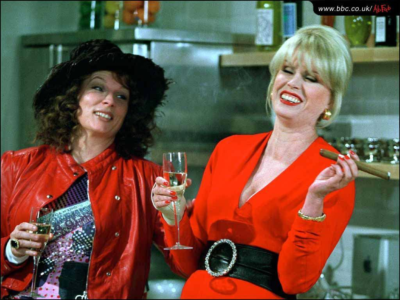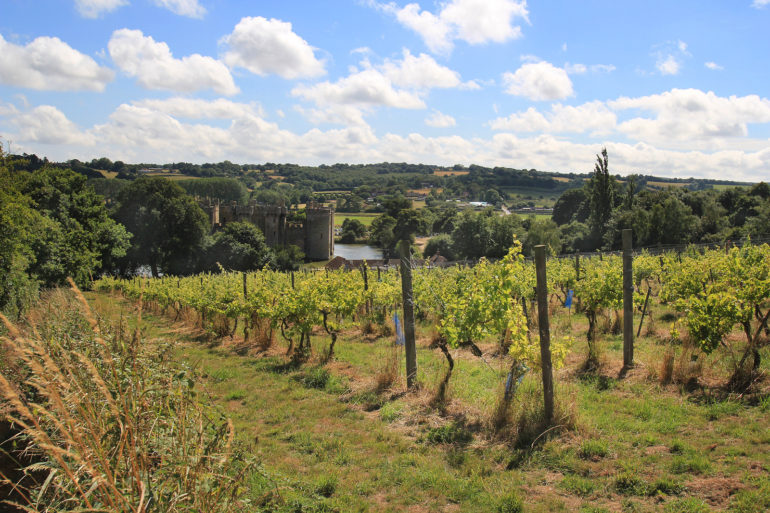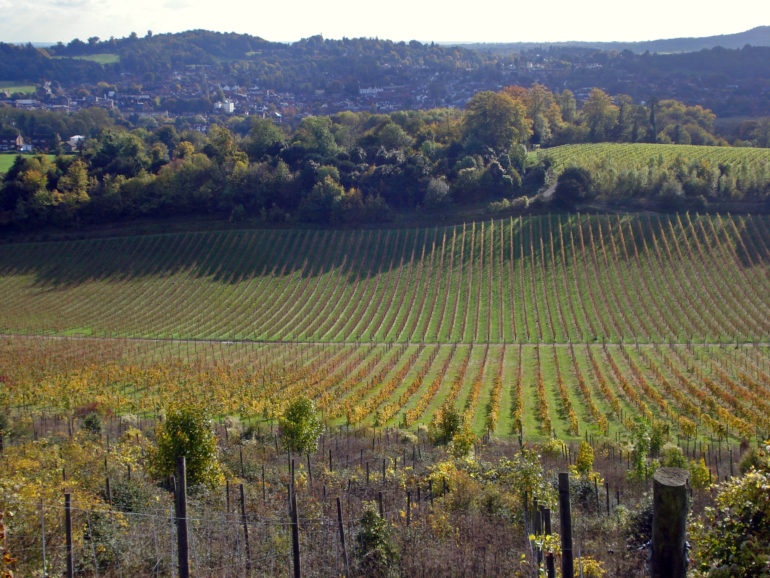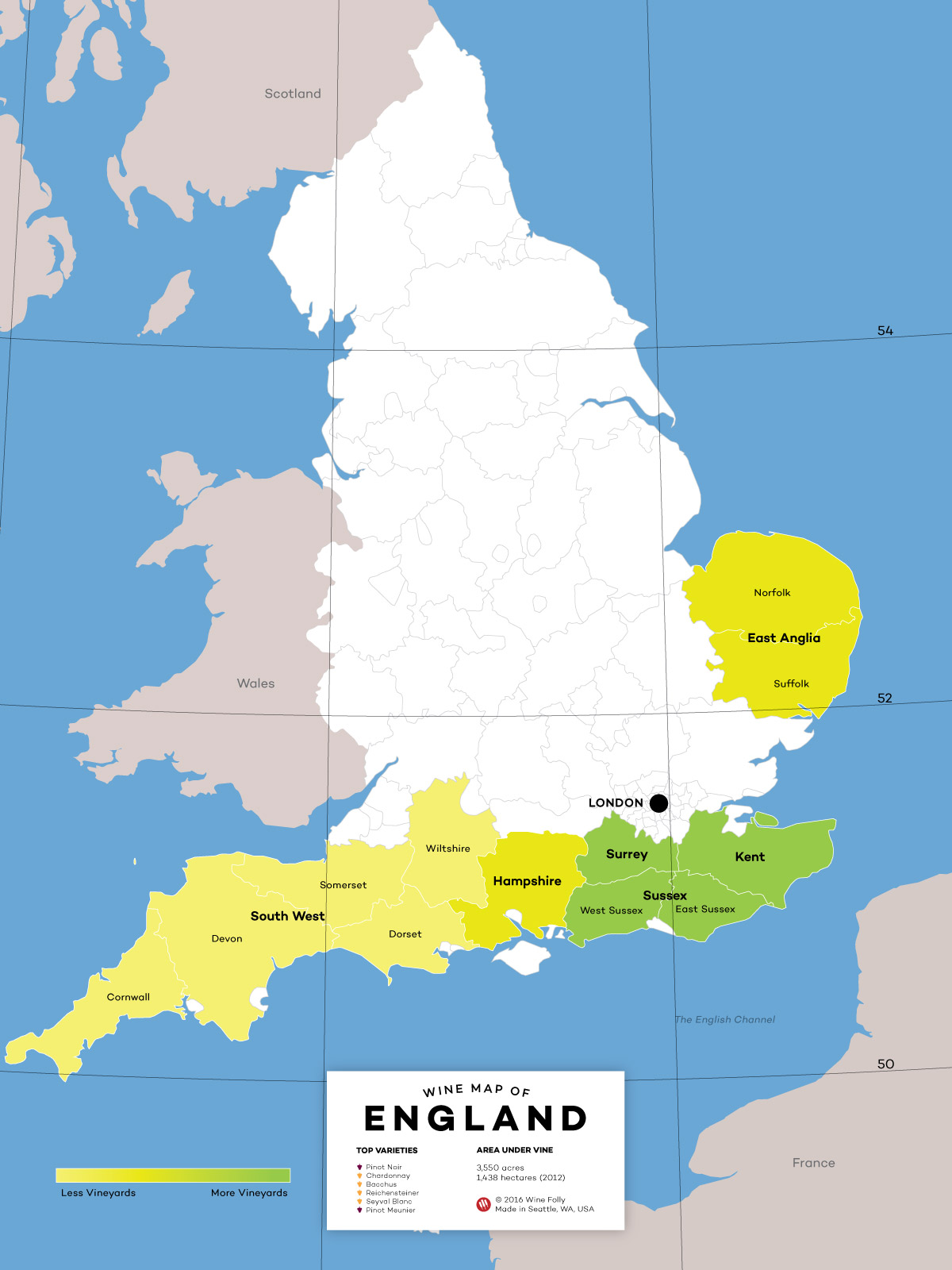If you’re curious about the growing buzz around English wine, this introductory guide to the wines of England will help you get to know the major emerging regions, grapes varieties and styles that are putting England on the map. UK-based Champagne lovers looking for bubbles on a budget take note: English sparkling wine has more in common with Champenoise terroir than you may think.
English Wine?

(or in the case of Abfab, drunks).
When it comes to quality wine, England is probably not the first country to come to mind. For centuries, the English were fully committed to drinking wine (as of 2014, the UK ranks 6th in the world for overall wine consumption) rather than producing it. The small amount of wine England did make was often met with snide comments. Over the past decade this has changed dramatically. England is an exciting new force in the wine world, producing world class bubbles, winning awards and, for the first time, beating major Champagne houses in competitions and earning well-deserved recognition across the globe. Although some still wines are made, it is the traditional method sparkling that consistently captures people’s attention and also represents the majority of English wine production at over 65% of all wine made.
England’s Wine Regions
- Vineyards: 3550 acres / 1438 hectares (2012)
- Number of wineries: 128 (2012)
- First Vineyard: Hambledon Vineyard in Hampshire, established in 1951
- Production: 84% Sparkling and White Wine, 16% Red
It’s no secret that England sees a lot of rain. In the south, where the majority of viticulture is centered, the climate is slightly warmer and drier. With a little help from global warming, the average annual temperatures are on the rise and the issues with grapes ripening that have long plagued England’s winemakers may soon become a thing of the past. But for now, the best regions for viticulture are along the southern strip of England’s coast, from Cornwall to Kent, and they share similar climates, soil types and grow an array of cool-climate suitable grapes varieties.
The three major regions to know are:
- Sussex
- Kent
- Surrey
Sussex

Sedlescombe vineyard (England’s first organic–now biodynamic–vineyard) looking towards Bodiam Castle. by Steve Gardner
Sussex is located in the southeastern corner of England, situated along the English Channel. One of the sunniest regions in the whole of the British Isles, it sees less rain than any of the other wine growing regions on the sceptred isle. That’s not to say that rain isn’t still a problem during the crucial period when the vines begin flowering and, as in all of England’s wine regions, frost and rot remain a constant worry. The geographic region of Sussex is comprised of two separate counties, West Sussex and East Sussex, both of which are home to a growing number of vineyards.
the same type of soils famously found in Champagne.
The South Downs and various chalk outcroppings characterize the landscape not only of Sussex, but also define the regions directly to its west, north and east. Limestone chalk soils dominate Sussex and contribute to the region’s ability to produce quality grapes for sparkling wine. If that sounds vaguely familiar, it is because these are the same type of soils famously found in Champagne. Another trait that Sussex shares with its Gallic neighbor is a cool climate, which helps preserve the acidity needed to make top tier sparkling. Sussex lies above the 50th parallel, at the uppermost extreme of the 30-50 degree latitude generally considered suitable for quality winemaking.
The big grape plantings here are Bacchus and the classic Champagne grapes, Chardonnay, Pinot Noir and Pinot Meunier, all of which are well-suited to cooler climates. The aromatic white Bacchus is a crossing of Silvaner x Riesling and Müller-Thurgau and was developed in Germany during the 1930’s. The wines of Sussex are often described as chalky, flint and possessing a strong mineral character, reflecting the soils in which the grapes are grown.
Sussex is poised to become the first region to be awarded PDO status in England.
Popular Wine Varieties of the UK
- Pinot Noir, Chardonnay and Pinot Meunier: The 3 primary grapes used for traditional method English sparkling wines.
- Bacchus: A white German crossing of Silvaner x Riesling and Müller-Thurgau that makes aromatic wines that tend to be low acid. As a result, it tends to be used in blends.
- Ortega: An early-ripening white crossing of Muller-Thurgau x Siegerrebe developed in Germany with a peach-like aroma and typically made into sweet wines.
- Seyval Blanc: A lean minerally white French hybrid often used in late harvest or Eiswein-style dessert wines.
- Reichensteiner: The fifth most planted variety in England, Reichensteiner is a high acid German crossing used as a component in sparkling wines.
Kent

From moated castles and the white cliffs of Dover, Kent offers one of the most picturesque wine regions of England. by loki1973
Kent is just to the east of Sussex, across the English Channel from Calais. The iconic White Cliffs of Dover famously form the coastline of Kent, which has long been an abundant source of the UK’s agriculture and home to many orchards. Like Sussex, the relatively warmer climate (compared with the rest of England), makes it a viable place for farming. The best vineyard sites have a south- facing orientation to maximize the hours of sun on the vines, and Kent shares the same chalk limestone soil as its neighbors.
Taittinger is the first Champagne producer to jump on the English sparkling boom
Today Chardonnay, Pinot Noir, Bacchus and Ortega represent many of the vineyard plantings in Kent, having replaced German crossings like Reichensteiner and Huxelrebe, which were heavily planted throughout the 1970’s. Again, the wines have a pronounced mineral nose, but also show aromas of apples, pears, and elderflower with bright, refreshing acidity.
Late in 2015, Champagne house Taittinger announced its purchase of land in Kent intending to plant Chardonnay, Pinot Noir and Pinot Meunier on its newly acquired site. Taittinger is the first Champagne producer to jump on the English sparkling boom and invest in the country’s burgeoning wine industry.
Surrey

Denbies Vineyard is the largest in the region. by Diamond G.
Surrey, too, has chalky soils made up of the remains of ancient marine fossils. It is the site of the second Champagne house investment in England. Pommery and Hattingley Valley have entered into a partnership. Surrey is also home to one of England’s largest producers, Denbie’s Estate, which boasts Blighty’s biggest vineyard, the eponymous Denbies Vineyard.
More regions to watch
Hampshire
West of Sussex is Hampshire, well-known for its seaside resorts and the home of England’s first modern commercial vineyard. The Hambledon Vineyard was established in 1951 by Major General Sir Guy Salisbury-Jones, a lifelong Francophile who believed in the potential of his native Hampshire to produce grapes worthy of making into wine. Seyval Blanc was his variety of choice, though they have since replanted to the Champagne varieties.
East Anglia
North and east of London lie the counties of Norfolk and Suffolk which together make up East Anglia. Soils here are denser with high proportions of clay. Bacchus is the main grape in East Anglia, but newer growers are experimenting with Pinot Noir and Chardonnay. The German crossings, such as Reichensteiner, Schonburger and Huxelrebe, in addition to the hybrid Rondo, are all grown successfully here.
South West England
The South West is small in vine plantings compared to the South East–about 235 hectares (580 acres) versus 1186 hectares (2930 acres), but the wines are no less delicious. For example, not far from the Cornish Riviera is Camel Valley – Cornwall’s largest vineyard which lies just off the bank of the River Camel. Camel Valley is forging the way for producers in Cornwall by consistently earning awards for their sparkling wines. Some of the varieties you’ll see here include Pinot Noir, Seyval Blanc and Reichensteiner.
A lil’ History on English Wine

The chalky white limestone soils you can find here are from the same era (Kimmeridgian) of the limestone in Champagne and Chablis. by Fraser Elliot
The grapevine first arrived on England’s shores thanks to the Romans, who brought viticulture with them to every new land they sought to conquer. Access to wine was a right of every citizen and slave, and the Romans planted vines to ensure there would be enough wine to go around. After the fall of the empire, Christian monasteries maintained vineyards for use in the Sacrament, for pilgrims as well as for their own use. A warm period during the Middle Ages helped grapes to consistently ripen. Wine production was relatively stable until the advent of the plague, which reached England around 1348 and wiped out an estimated third of the population. When Protestant King Henry VIII disbanded Catholic monasteries through the Dissolution of Monasteries in the mid-16th century, England’s viticulture fell into a sort of Dark Age even as the nation’s cultural renaissance was in full bloom. From the 1700’s through to the dawn of the 20th century, there were a few private individuals who planted vines and dabbled in winemaking, however it wasn’t until post World War II in the mid-1950’s and 60’s that the interest in commercial viticulture in England was rekindled.
English Wine Tips
- Producers are starting to experiment with new varietals and styles. Chapel Down of Kent is the first winery in England to make Albarino, sourced from its Sandhurst Vineyard, in addition to being the first producers of orange wine – made from Bacchus, in the UK.
- 2015 was a big year for the English wine industry. The Decanter World Wine Awards saw English sparkling pick up 130 medals, as reported by the publication. Pioneering houses such as Nyetimber, Chapel Downs, Ridgeview, Denbie’s and Gusborne were among the winners. The best of the bunch also earned over a dozen gold medals at the International Wine Challenge.
- 2016 marked the first year English producers maintained a significant presence at Prowein, the international wine and spirits trade fair based in Germany.
- In terms of the rest of the United Kingdom, wine is also successfully made in Wales and attempts have even been made in Scotland.
BUYER BEWARE: “British wine” and “English wine” are not the same thing. A label boasting “British wine” is typically a sweet Port-style or Sherry-style wine made from imported grape concentrate. It’s cheap, not so cheerful, and probably best avoided.
Last Word
England is truly experiencing a renaissance. Over the last ten years, the number of vines planted has more than doubled and is expected to do so again by 2020. Each year more wineries pop up and new producers are getting into the game to help meet the growing demand for English bubbly. Like many regions with marginal climates, bouts of bad weather can be particularly disastrous. Disease and rot are issues and, in cooler years, grapes may struggle to ripen. A poor vintage, like the wet 2012, meant drastically reduced yields. Climate change will play an important role in England’s future.
As English wineries look towards increasing exports, consumers can anticipate more of these wines becoming available in global markets. For those of us trying to satisfy Champagne tastes on something closer to a beer budget, English fizz can bring us a step in the right direction. As the prices for land in England are drastically lower than those in Champagne, producers can afford to sell their wines at more consumer-friendly prices. With prices averaging from $20-$35, this is the closest you can get to bubbles that taste like Champagne (more so than your Cavas or Proseccos) but don’t break the bank. Will England one day be the new Champagne? It depends who you ask. England is still developing as a winemaking country, but it will undoubtedly be exciting to see what English wine will yield in the years to come.
Sources
Skelton, Stephen, UK Vineyards Guide 2010: A Guide to the Vineyards and Wines of the United Kingdom and the Channel Islands, S. P. & L. Skelton, 2010
The Wine Institute www.wineinstitute.org
United Kingdom Vineyard Association ukva.org.uk
